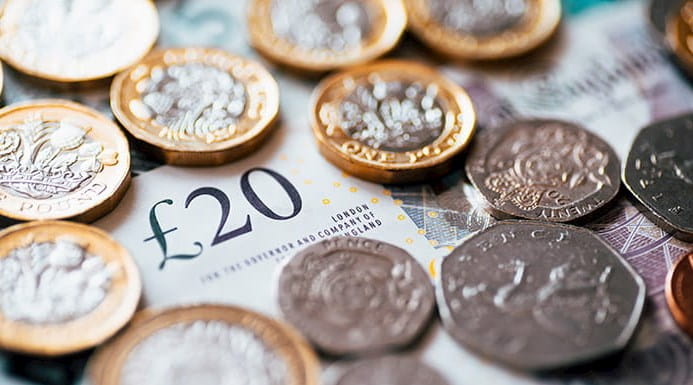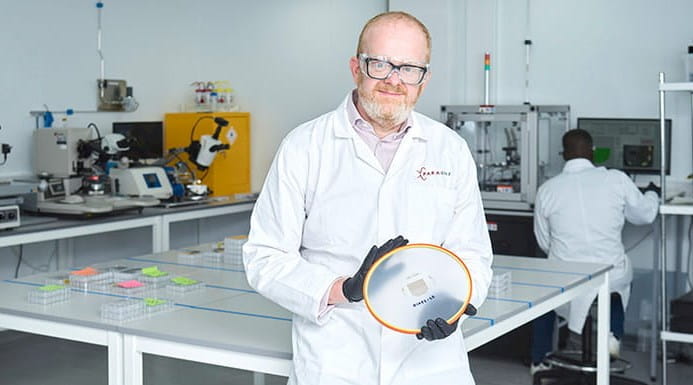This month's economic indicators paint a promising picture for the UK economy as it navigates its way out of recession. Official figures revealed a modest growth of 0.1% in February, down from growth of 0.3% in January. This was also coupled with a significant surge in business confidence to a two-year high, showing clear signs of recovery.
Despite these positive developments challenges remain, including a concerning rise in economic inactivity and persistently weak investment intentions. ICAEW outlines the pivotal factors influencing the current speed of the country’s economic recovery.
Exit from recession a racing certainty
GDP growth in February was partly driven by a 1.2% uptick in manufacturing output as the car sector in particular saw a strong increase in activity. The service sector grew by 0.1%, with public transport and haulage and telecommunications having a strong month. In contrast, construction output fell by 1.9% in February as wet weather hindered activity. February’s uptick means it’s likely that the UK exited recession in the first quarter, with March output from key sectors likely to have been supported by the earlier Easter holiday.
Business confidence hits two-year high
Sentiment tracked by ICAEW’s Business Confidence Monitor (BCM) – one of the largest and most comprehensive quarterly surveys of UK business activity, which surveys 1,000 chartered accountants across the UK – increased threefold to 14.4 in Q1 2024 since the previous quarter, which was recorded at 4.2, (see Chart 1) its highest level since Q1 2022 and double the pre-pandemic average of 7.2. The significant boost in confidence was driven by positive domestic sales and exports projections for the next 12 months, with lower inflation and expected falls in interest rates also factors.

UK reaches the final leg of inflation fight
UK CPI inflation stood at 3.2% in March 2024, the lowest rate since September 2021. The largest downward contribution to the headline rate came from lower food inflation, which dropped to 4.0% in March, its lowest rate since November 2021. Food inflation has eased for 12 successive months since it peaked at its highest for 45 years at 19.2% in March 2023 (see Chart 2). Core inflation – a better indicator of the underlying trend because it strips out volatile costs such as food and fuel – came in at 4.2% in March, down from 4.5% in February.

Real wage growth highest in more than two years
UK regular pay growth (excluding bonuses) was 6.0% in the three months to February 2024, a slight slowdown on the 6.1% recorded in the three months to January. While wage growth is slowing, the cooling of UK inflation at a much faster rate means that pay growth in real terms is accelerating, resulting in an increase to people’s spending power. Real regular pay grew by 2.6% in the three months to February 2024, the highest since June to August 2021 (see Chart 3). If this trend continues, real household incomes will be further boosted and are likely to lift consumer spending, a key driver of UK economic output.

UK economic inactivity rises to nine-year high
The UK economic inactivity rate – the proportion of people who are neither working nor looking for a job – was estimated at 22.2% in the three months to February 2024, the highest rate since the three months to August 2015. A smaller workforce relative to the population is a key concern because it reduces average economic output and adds to the upward pressure on inflation. The increase in the three months to February was mainly driven by those inactive because they were students or because of long-term sickness.
Investment intentions remain weak
ICAEW’s latest BCM also revealed that despite improved confidence, businesses saw only a modest rise in capital investment in Q1 2024, up to 2.3% from 1.6% in Q4 2023. Companies plan to increase investment by just 1.6% over the next 12 months, below the historical average of 2%. The persistent weakness in investment intentions is a particular concern, as it limits UK productivity and its growth potential.
Implications for accountants, business owners and the economy
Taken together, these latest data releases provide clear evidence that recession concerns are disappearing into the rear-view mirror. However, the longer-term outlook is still difficult with the lagged impact of earlier interest rate hikes, anaemic investment intentions and rising economic activity likely to continue limiting UK potential output.
UK economy – what to watch for this month:
- While the next interest rate decision on 9 May is set to confirm that rates will remain on hold once again, a shift in the vote split towards more rate setters voting to loosen policy would indicate that a rate cut is on the horizon.
- The next GDP figures, to be released on 10 May, should confirm that the UK officially exited recession in Q1. Anything less than a 1% monthly GDP decline in March would mean that the UK economy returned to growth in the first quarter.
- April’s inflation figures, due out on 22 May, should see CPI inflation return to the Bank of England’s 2% target for the first time since July 2021 as lower energy bills – following the cut in Ofgem’s energy price cap – will have significantly reduced the headline rate.
There is still time to register for ICAEW’s UK Regions Economic Summit, taking place on Tuesday 14 May. Huw Pill, Bank of England Chief Economist, among the guest speakers. Sign up to this free virtual event on ICAEW’s event page.
Links to support
For more insights, analysis and resources for organisations facing rising costs of doing business, visit ICAEW’s Cost of doing business hub.
ICAEW also works with caba to promote the mental health of chartered accountants and their families producing articles, guides, webinars, videos and events which can provide support during these difficult times.
Advice for government
ICAEW sets out its vision for a renewed and resilient UK, drawing on insights and expertise from its members.





